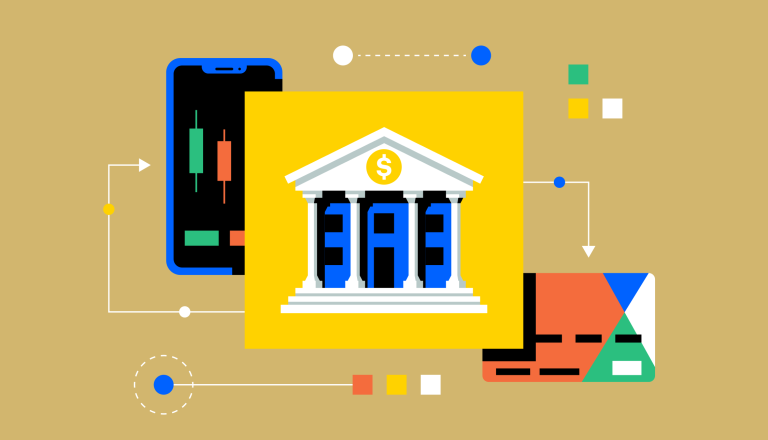Understanding Leverage Trading in Crypto

Leverage gives traders the ability to trade larger value contracts while putting down relatively smaller amounts upfront. This provides traders with greater efficiency for their capital and also allows them to increase their exposure without needing additional capital. Leverage can help magnify your gains from trading, but it's also important to understand that leverage also amplifies your potential losses.
While spot trading of crypto using margin is prohibited in the United States for most investors, derivatives offer investors an alternative path for trading with leverage.
In this article, we’ll cover the basics of trading derivatives with leverage and the benefits and risks associated with it.
Get to know futures margin
When it comes to trading futures, there are two main types of margin: Initial Margin and Maintenance Margin.
Initial Margin: Initial margin is the amount you must deposit to initiate a position on a futures contract. Typically, the exchange sets the initial margin amount for futures contracts. However, an FCM (Futures Commission Merchant) may require that you deposit additional funds beyond the initial margin requirement.
Maintenance Margin: The maintenance margin or maintenance margin requirement (MMR) is the amount of money needed in your account at any given time in order to maintain an open position. If your balance dips below the maintenance margin, your position(s) can be liquidated. Maintenance margins are typically lower than initial margins, however the exact amount can vary as it is set by the exchange.
If the initial margin is the amount of funds you need to open a position, the maintenance margin is the amount of funds you need for your position(s) to remain open. And if your goal is to avoid liquidation, you will want to keep an eye on the value of your account, which can fluctuate with movements in the prices of the futures contracts that you hold, and ensure that it stays above the maintenance margin. It is also important to remember when opening a futures position that you do not own the underlying asset, and the margin you provide is not a down payment.
Let’s take a look at an illustrative example - heads up, this involves a fair amount of math.
You open a long position of 10 Nano Bitcoin futures contracts with an entry price of $25,000. Because a Nano Bitcoin futures contract is 0.01 of a Bitcoin and you are buying 10 contracts, resulting in a market value (or notional value) of $2,500.
With this example, the brokerage requires an initial margin of 33% and a maintenance margin of 30% of the market value. For this position, your initial margin is $825 and maintenance margin is $750.
Now let’s say the price of Bitcoin drops from $25,000 to $23,000. With your 10 Nano contracts, the $2,000 decrease in Bitcoin’s price would equate to a $200 decrease in the Open Trade Equity (OTE) of your long position, reducing your initial $825 to $625. This is below the maintenance margin, which means your position would be partially liquidated, with two of your contracts being automatically closed out.
Why were two contracts closed out? Divide the $625 that remains by the initial margin (33%) to get the market value after liquidation, which is equal to $1,894. Dividing that by the price of BTC ($23,000) and by the nano contract’s 0.01 size results in ~8.2. However, there are no fractional contracts, so the liquidation would be for two contracts instead of ~1.8.
You will want to keep an eye on your account balance to ensure it does not fall below the maintenance margin, otherwise liquidation can occur.
Trading crypto with leverage
Because of the risks outlined above, trading with leverage is not for everyone. In fact, many countries have rules and regulations that brokers, exchanges, and other financial services firms must adhere to that dictate who can trade with leverage, and what types of assets are eligible for this type of trading.
In the United States, spot trading of cryptocurrencies using leverage is prohibited for most investors. However, there are other ways for traders to get exposure to crypto while trading with leverage, with the most popular way being trading crypto derivatives, such as futures and options. Futures contracts are agreements to buy or sell an asset at a set price on a future date. Options contracts give you the right to buy and sell an asset without being locked into the decision upfront. Depending on the products your Futures Commission Merchant (FCM) supports, you may have the ability to buy or sell futures and options contracts for cryptocurrencies like Bitcoin or Ethereum with leverage.
While trading with leverage can provide increased buying power and enhanced returns, it is also important to keep in mind that it also magnifies the potential losses and increases the risk of your position. Educate yourself on the market and the terms and conditions associated with any offered leverage before making a trade.
Disclaimer
Disclaimer: Trading in futures involves substantial risks. You should only trade in financial products that you are familiar with and understand the associated risks, and after carefully considering whether such trading is suitable in light of your investment experience, financial position, and investment objectives.
Leverage in futures trading can work for you or against you. The risk of loss using leverage can exceed your initial investment amount.
Futures products and services on Coinbase Advanced are offered by Coinbase Financial Markets, a member of NFA and is subject to NFA’s regulatory oversight and examinations. However, you should be aware that NFA does not have regulatory oversight authority over underlying or spot virtual currency products or transactions or virtual currency exchanges, custodians or markets.